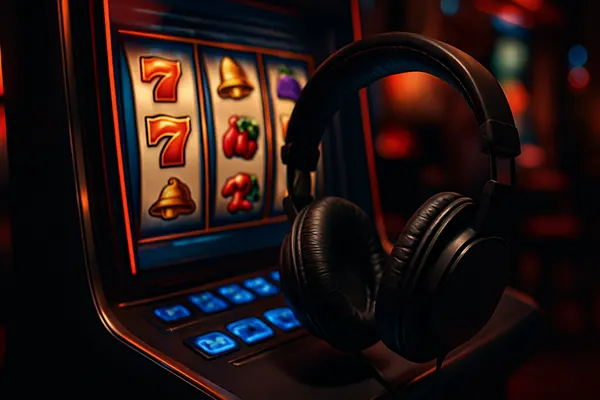Anxious Soundscapes and Responsible Gaming: Can Music Help Players Stop in Time?

Sound design in gambling environments has long been overlooked as a behavioural trigger, but new research suggests it may play a pivotal role in promoting responsible gaming. Anxious, dissonant music in slot games and poker apps could be used not to engage players deeper, but rather to nudge them to take breaks or stop playing altogether. This article explores scientific insights from 2023–2024 and UX design principles that show how tension in music may prevent excessive gaming behaviour.
Recent Experiments: What the Research Reveals
In 2023, a joint study by the University of Sunderland and a team of Austrian psychologists examined how background audio affects decision-making during gambling. Participants were exposed to either neutral or dissonant soundtracks while playing online slots. The findings were clear: players exposed to high-tension, anxious music were significantly more likely to pause or quit earlier.
The research showed that dissonant sounds — typically characterised by unresolved chords, minor scales, and irregular tempo — created a subtle sense of unease. This discomfort did not necessarily reduce enjoyment but interrupted the psychological flow that often leads to prolonged gambling sessions.
Notably, the effects were stronger when music was paired with subdued visual feedback. That means when flashing lights or cheerful graphics were reduced, the impact of the anxious soundtrack became even more evident. It disrupted the immersive loop many players fall into.
Link to Responsible Gambling Goals
This form of “audio friction” aligns closely with modern responsible gaming strategies. Instead of using pop-ups or alerts — which are easy to ignore — sound engages users at a subconscious level. As players feel mild tension, they are more likely to reflect on their behaviour or consider quitting earlier.
In Austria, researchers collaborating with addiction prevention centres are now testing how different audio profiles affect vulnerable groups. Preliminary results show that even short sessions with uneasy soundtracks can reduce craving intensity and perceived enjoyment, especially in users flagged as at-risk.
This suggests that sound design could be a low-cost, non-intrusive way to support responsible gaming. When integrated early in UX development, such interventions may subtly reshape user habits without direct confrontation or shaming.
UX Design Principles Behind Anxious Sound Implementation
Integrating anxiety-inducing music into games must be subtle and intentional. UX designers emphasise that player engagement should not be broken abruptly; instead, gentle tension should encourage self-reflection. This is achieved by crafting soundtracks that gradually shift from neutral to dissonant over time.
For example, during longer play sessions, audio cues may become rhythmically irregular or tonally darker. This change often goes unnoticed consciously but alters emotional perception. Combined with pauses in reward loops or longer win animations, the music prompts a cognitive break.
Importantly, developers must avoid manipulating users through fear or stress. The goal isn’t to punish players but to insert psychological “speed bumps” that challenge auto-pilot behaviours. Just like visual fatigue prompts rest, audio discomfort can signal mental saturation.
Game Developers and the Ethical Balance
Studios adopting this technique must also consider the ethics of influencing user behaviour. Is it acceptable to induce unease for the user’s own good? The answer lies in transparency and intent. If the goal is truly harm reduction — and not to trick players into re-engagement — it aligns with ethical design principles.
Companies like MindfulPlay and Studio Zeta are already testing these features in beta environments, allowing users to opt in to “conscious mode” with adjusted soundscapes. Early feedback suggests users appreciate the non-intrusive nature of the intervention compared to jarring pop-up reminders.
Ultimately, it’s about balance: helping players stay in control without diminishing their entertainment experience. As part of a broader suite of tools, such as spending trackers and voluntary limits, audio design becomes a powerful new ally in responsible gaming.

Why Music Might Succeed Where Visual Warnings Fail
Visual warnings and mandatory breaks have been the industry standard for years, yet they often fail to impact real-time behaviour. Most players dismiss pop-ups or override timers without a second thought. Music, however, bypasses rational resistance by working through emotional pathways.
Neurologically, sound reaches the limbic system — the emotional centre of the brain — more directly than visuals. When users feel uneasy without knowing why, they are more likely to take action than if they are simply told what to do. This makes anxious music a valuable tool for reducing compulsive play.
Moreover, music operates continuously. Unlike a one-off alert, it shapes the entire session. This persistent influence, especially when intelligently layered with gameplay moments, can subtly moderate player tempo and reduce risk of loss-chasing behaviour.
Building the Future of Player-Centred Design
In the near future, audio strategies may be integrated with AI-based personalisation. By tracking session length, betting frequency, and historical behaviour, game systems could dynamically adjust soundtrack tension to mirror user state.
Such adaptive music, already used in fitness and health apps, could support player wellbeing in a scalable, data-informed way. Instead of treating all users the same, games would respond in real-time, turning audio into a responsive guardian rather than just background filler.
While further testing and transparency will be key, the direction is promising. With rising regulatory scrutiny and growing user demand for safer experiences, anxious soundscapes could soon become an essential part of how we design ethical, engaging gaming environments.
